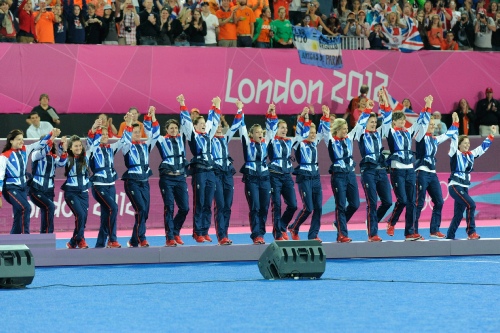
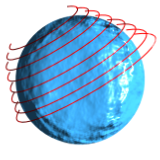

In the beginning
Hockey is a very old game and there is some evidence to show that it has been played in some form or another for thousands of years. But like so many modern sports, the true roots of the game we play today are to be found in Victorian England.
During the 19th Century, variations on a game that today might be recognised as hockey were being played in public schools in England, including Eton. Although at that time there was no general agreement on what the rules should be, the version of the game being played at Eton shows some aspects which would be recognisable today. Each team had 11 players, including a goalkeeper, and shots at goal could only be taken from within a marked area. The game was started with a ‘bully’, something that was a feature of hockey for many years but has now all but disappeared from the game.
There are some disputed claims as to which is the oldest hockey club in the world, but one of the claimants, Blackheath, was playing a form of hockey in the 1860s. Blackheath members seem to have been a very sporty lot as they also played football and rugby. And there were similarities with rugby in that their hockey teams played with 15 members. (It is interesting to note that Blackheath Rugby Club also claims to be the oldest rugby club in the world.)
One of the peculiarities of the Blackheath version of hockey is that it was played not with a ball, but with a solid rubber cube. Although some clubs followed Blackheath’s example, other clubs were being formed where a more conventional ball was being used.
Perhaps the more convincing claim to be the oldest hockey club in the world comes from Teddington. Cricket players looking for a sport they could play in the winter, started playing hockey on the outfield. Some of the cricket heritage of hockey can be found in the sport to this day, such as there being two officials called umpires and a hockey ball being a similar size to a cricket ball. Indeed, right up to the 1970s the Rules of Hockey made reference to a ‘regulation cricket ball’ when describing a hockey ball.
Teddington drew up a list of rules which form the basis of our modern game. It was these rules which were largely adopted when the Hockey Association was formed in 1886. The Hockey Association was the national governing body for men’s hockey in England for just over 100 years.
It will be noted that the Hockey Association was only the governing body for men’s hockey. Women had been playing hockey at the Oxford colleges at about this time and the first women’s club, Molesey, was formed in 1887. It had been the original intention of the women to affiliate to the men’s Hockey Association, but their approaches were rebuffed and this led to the formation of the All England Women’s Hockey Association in 1896.
Hockey Conquers the World
England has given many sports to the world, and hockey was quick to go global, aided by the existence of the British Empire. Where the British Army went hockey went too, most notably to India, where the local population took to the sport with relish. For decades India (and later India and Pakistan after partition) was the nation to beat, although it was a feat that few achieved. Something that evidences the extent to which India had become a world hockey powerhouse is their record in the Olympic Games, taking the hockey gold in 1928, 1932, 1936, 1948, 1952, 1956 and 1964. Pakistan won gold in 1960, 1968 and 1984.
Hockey became popular in other parts of the old Empire, notably Australia. But it was not just in the English speaking parts of the world that hockey caught on. In Europe, Belgium, The Netherlands and Germany all took to the game, and in later years Spain was to emerge as one of the world’s top nations. Argentina and the USA add their names to the list of top international sides, although principally for their women’s teams. The Far East, especially Korea and China, has also demonstrated hockey excellence in recent years.
The International Hockey Federation (FIH) was formed in 1924. Some of the nations which had separate governing bodies for men and women (such as England), got together in 1927 and formed the International Federation of Women’s Hockey Associations. The two bodies amalgamated to form a single international ruling body in 1982, still under the banner of the FIH.
The first hockey world cup was played in 1971 and this is now played every four years. The women’s world cup was first played in 1974 and has been played every four years since 1986. Both men’s and women’s cups are played in the same year and is the year midway between the four year Olympic cycle.
The Montreal Olympics in 1976 was important in the history of hockey. Astroturf had been invented in 1965, and although many other types of artificial grass have appeared since then, the word ‘Astroturf’ or simply ‘Astro’ seems to have stuck in the same way that not all cleaners are Hoovers. The Montreal Olympics was the first time that a major hockey tournament had been played on an artificial surface. Now all international hockey, and almost all club hockey in the UK and elsewhere, is played on artificial surfaces.
Hockey became popular in other parts of the old Empire, notably Australia. But it was not just in the English speaking parts of the world that hockey caught on. In Europe, Belgium, The Netherlands and Germany all took to the game, and in later years Spain was to emerge as one of the world’s top nations. Argentina and the USA add their names to the list of top international sides, although principally for their women’s teams. The Far East, especially Korea and China, has also demonstrated hockey excellence in recent years.
The International Hockey Federation (FIH) was formed in 1924. Some of the nations which had separate governing bodies for men and women (such as England), got together in 1927 and formed the International Federation of Women’s Hockey Associations. The two bodies amalgamated to form a single international ruling body in 1982, still under the banner of the FIH.
The first hockey world cup was played in 1971 and this is now played every four years. The women’s world cup was first played in 1974 and has been played every four years since 1986. Both men’s and women’s cups are played in the same year and is the year midway between the four year Olympic cycle.
The Montreal Olympics in 1976 was important in the history of hockey. Astroturf had been invented in 1965, and although many other types of artificial grass have appeared since then, the word ‘Astroturf’ or simply ‘Astro’ seems to have stuck in the same way that not all cleaners are Hoovers. The Montreal Olympics was the first time that a major hockey tournament had been played on an artificial surface. Now all international hockey, and almost all club hockey in the UK and elsewhere, is played on artificial surfaces.
Hockey’s Coming Home
Hockey in the UK went through a golden patch in the 1980s, with Great Britain winning bronze in the Los Angeles Olympics and England going on to win silver in the World Cup in London in 1986. In 1988 Great Britain won the gold medal in the Olympic Games in Seoul. During this period hockey enjoyed increased exposure, which inevitably brought about some changes. It has been argued that some of the benefits that accrued from the success of the 1980s were balanced out by some of the problems it also brought. Hockey seemed ill-prepared to get the best from its success.
League hockey, which had started to become increasingly popular (although on a comparatively local level), had traditionally been rejected by the hockey authorities on the grounds that it smacked of professionalism. But in 1988 a national league for men played its first season (won by Southgate), followed a year later by a national league for women. A National Hockey Stadium was built at Milton Keynes in 1995 and although it staged some very successful tournaments, including a Junior World Cup and an Olympic Qualifier, some in the hockey community regarded it as a white elephant. The cold wind down the back of your neck in the upper tiers of the stand was notorious. Provision had been made for hospitality boxes to be built, but they never were.
Nationally and internationally, single-sex governing bodies were being increasingly frowned on, and in 1996 The Hockey Association and the All England Women’s Hockey Association amalgamated to form English Hockey. By 2003 English Hockey was in serious financial difficulties and had to be wound up. A new governing body, England Hockey, was formed to replace it , and it is this body which remains the national governing body for hockey to this day. One of the casualties of the financial problems was the National Hockey Stadium, which was initially leased to Wimbledon football club in order to raise some badly needed funds. The football club had moved to Milton Keynes to become MK Dons and needed a temporary home whilst its own stadium was being constructed. The National Hockey Stadium has now been demolished but one of the legacies of the London Olympics in 2012 will be a new hockey stadium at Eton Manor, just outside of the Olympic park.
After the glorious 1980s English hockey went into decline. The best result for an England/Great Britain team in the World Cup or Olympics was a bronze for GB women in the Barcelona Olympics in 1992. However, 2009 saw a particularly encouraging development when England’s men won the European Cup for the first time, beating Germany in the final. The women took the bronze for the second time in succession, having previously won it in 2007 in Manchester. Most commentators believe that England’s star is again in the ascendency. More recently, England’s men and Great Britain’s women have both won silver in their respective Champions Trophy tournaments, and Great Britain’s women won bronze in the 2012 Olympics in London.
It should be mentioned that although this web site is primarily concerned with English hockey, English players form a substantial part of the Great Britain team. The GB team primarily exists to compete in the Olympics but, in the run-up to the Olympics, the GB team will often turn our at major international tournaments and take the place of England. Although all four of the home nations once joined together to form the GB team, Ireland now represents the island of Ireland, both north and south of the border.
Modern hockey tends to be dominated by nations such as Australia, Germany and The Netherlands, with both India and Pakistan going into decline in the last two decades. Many reasons have been put forward for this including the switch to artificial turf, which may have brought about an advantage to the richer nations. In The Netherlands hockey is almost a professional sport, attracting top players from around the world, including England.
One significant development in Europe has been the Euro Hockey League. Although European club hockey has been around since 1969, it usually consisted of a tournaments held over a long weekend at the end of the season involving eight clubs. The Euro Hockey League, first played in 2007, involves 24 of Europe’s top clubs, playing hockey at four venues. The League has tended to be dominated by German and Dutch Clubs, although Reading came third in 2011.
League hockey, which had started to become increasingly popular (although on a comparatively local level), had traditionally been rejected by the hockey authorities on the grounds that it smacked of professionalism. But in 1988 a national league for men played its first season (won by Southgate), followed a year later by a national league for women. A National Hockey Stadium was built at Milton Keynes in 1995 and although it staged some very successful tournaments, including a Junior World Cup and an Olympic Qualifier, some in the hockey community regarded it as a white elephant. The cold wind down the back of your neck in the upper tiers of the stand was notorious. Provision had been made for hospitality boxes to be built, but they never were.
Nationally and internationally, single-
After the glorious 1980s English hockey went into decline. The best result for an England/Great Britain team in the World Cup or Olympics was a bronze for GB women in the Barcelona Olympics in 1992. However, 2009 saw a particularly encouraging development when England’s men won the European Cup for the first time, beating Germany in the final. The women took the bronze for the second time in succession, having previously won it in 2007 in Manchester. Most commentators believe that England’s star is again in the ascendency. More recently, England’s men and Great Britain’s women have both won silver in their respective Champions Trophy tournaments, and Great Britain’s women won bronze in the 2012 Olympics in London.
It should be mentioned that although this web site is primarily concerned with English hockey, English players form a substantial part of the Great Britain team. The GB team primarily exists to compete in the Olympics but, in the run-
Modern hockey tends to be dominated by nations such as Australia, Germany and The Netherlands, with both India and Pakistan going into decline in the last two decades. Many reasons have been put forward for this including the switch to artificial turf, which may have brought about an advantage to the richer nations. In The Netherlands hockey is almost a professional sport, attracting top players from around the world, including England.
One significant development in Europe has been the Euro Hockey League. Although European club hockey has been around since 1969, it usually consisted of a tournaments held over a long weekend at the end of the season involving eight clubs. The Euro Hockey League, first played in 2007, involves 24 of Europe’s top clubs, playing hockey at four venues. The League has tended to be dominated by German and Dutch Clubs, although Reading came third in 2011.
The Future
Hockey has to compete in what is effectively a marketplace for players and spectators with dozens of other sports. The growth of women’s football is particularly seen as a threat to the sport. Although in some people’s eyes hockey is regarded as an old-fashioned sport, it has shown itself willing to adapt and modernise. Rule changes over the last few decades have seen the abolition of the roll-in and off-side. The bully has been relegated from being a feature of the game to something rarely seen. The ‘self pass’ free hit has speeded up the game and, unlike some sports, hockey has embraced technology. Umpires have been in radio contact with each other in major tournaments for some time, and video referrals have been the norm in international hockey. The 2012 Olympics will no doubt give a boost to the sport, but there are concerns that post the Olympics, funding will dry up, making it difficult to capitalise on any interest generated.
Above all hockey is a friendly sport. Although played with passion and requiring high levels of athleticism at the top level, friendship and good sportsmanship are still valued. Hockey is also a very tolerant game for the beginner. A raw learner, of whatever age, can be assured of a warm welcome at their local hockey club.
What ever may happen in the future, hockey will remain a great game played by great people.
Above all hockey is a friendly sport. Although played with passion and requiring high levels of athleticism at the top level, friendship and good sportsmanship are still valued. Hockey is also a very tolerant game for the beginner. A raw learner, of whatever age, can be assured of a warm welcome at their local hockey club.
What ever may happen in the future, hockey will remain a great game played by great people.
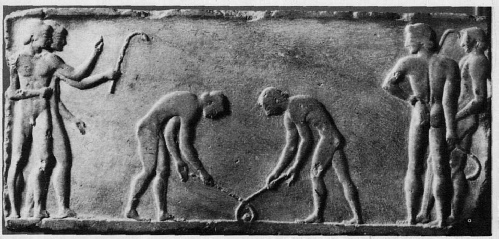
There is evidence that some form of hockey has been played since earliest times
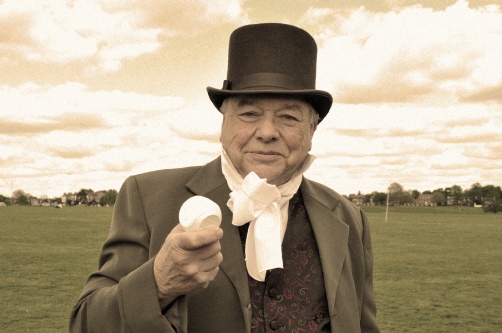

The British took hockey to India, where the local population actually became quite
good at it. India has won more Olympic gold medals than any other nation,
although they have enjoyed considerably less success in recent years.
good at it. India has won more Olympic gold medals than any other nation,
although they have enjoyed considerably less success in recent years.
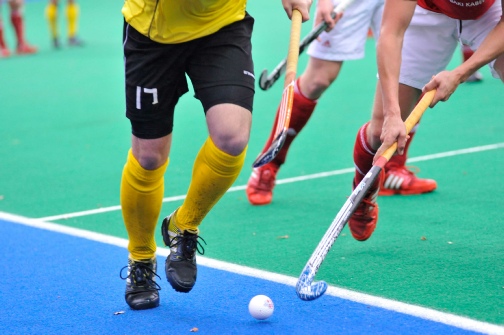
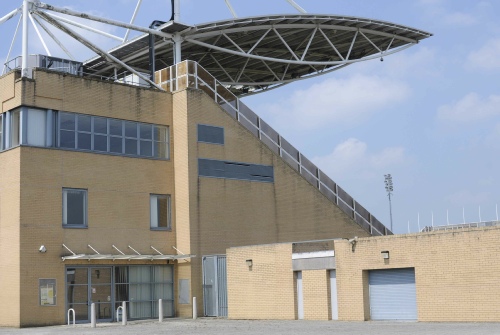
The National Hockey Stadium shortly before it was demolished. In
its last few years it was the home of the MK Dons football side
its last few years it was the home of the MK Dons football side
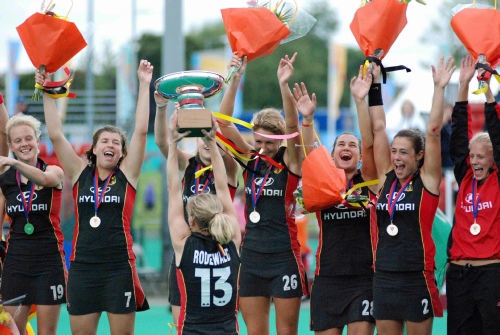
England returned to hosting major international competitions when the
men’s and women’s European Championships were held in Manchester
men’s and women’s European Championships were held in Manchester
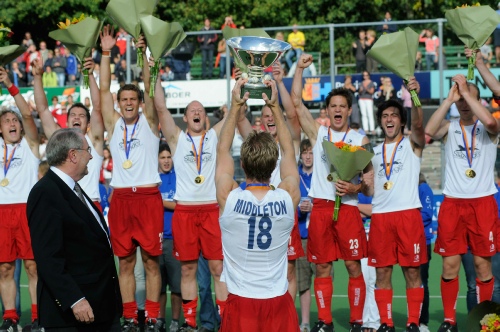
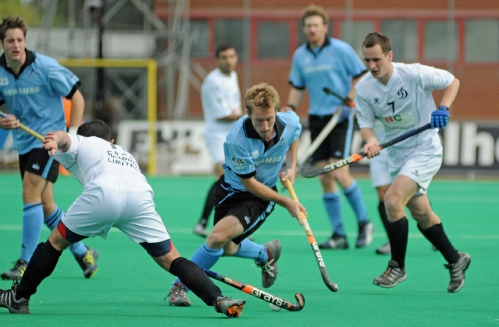
Dutch clubs are able to attract top players from around the world, i
including England. England captain Barry Middleton is seen here playing
for HGC in the EuroHockey League in 2008
including England. England captain Barry Middleton is seen here playing
for HGC in the EuroHockey League in 2008
